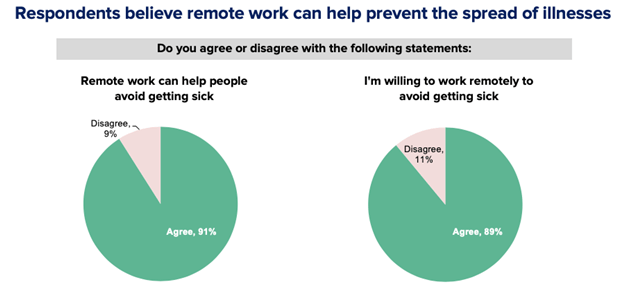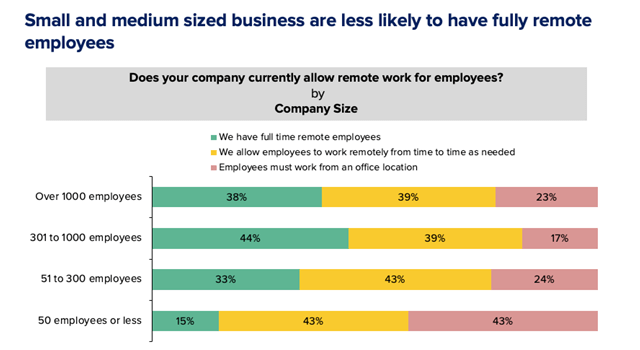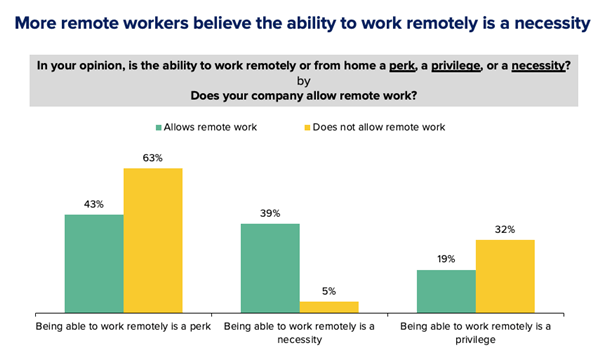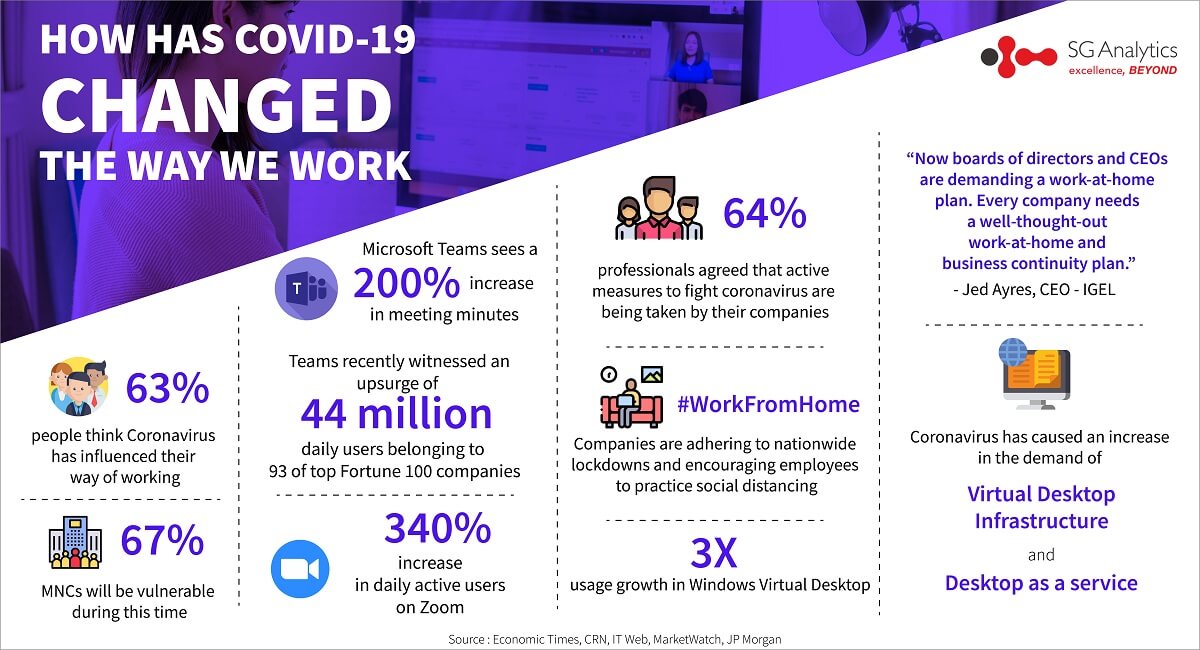The United States government has declared a state of emergency in response to the rapid spread of the coronavirus. Even companies are establishing new guidelines to keep their businesses running. They are using work-from-home solutions and enforcing social distancing guidelines. A popular American micro blogging and social networking service provider, Twitter, strongly encouraged work from home in the wake of the COVID-19 pandemic and many others have adopted remote working to maintain productivity amidst the catastrophe.
The concept of working from home has been growing over the past decade. However, analysts predict that the coronavirus crisis is going to accelerate that trend. The State of the American Workplace study from 2019, was conducted by Gallup. It found that about 43% of employees in the US already work remotely with some frequency. Some research indicates that working remotely for two or three days in a five-day workweek, results in the highest levels of productivity. Doing so would give the employee half the week for collaborations, meetings, and interactions. The other half of the week can then be utilized to focus solely on work.
Remote work has proven to be extremely helpful to many organizations during the nationwide lockdown initiated due to the pandemic. Therefore, remote work seems like the most logical safeguard in the digital economy for any company that has many employees. However, the solution is not as simple as it looks. Numerous Americans do not have access to internet at home. Additionally, some industries cannot function without in-person work.

Source: Vox
Roughly 75% (Pew Research Center) of adults in the US have broadband internet service at their homes. But the study found that older adults, racial minorities, and people with lower levels of education and income are not as likely to have internet at home. According to the study, full-time employees are four times more likely to have remote work options than part-time employees. Several states, including New York and California, have enacted strict policies for employees to stay at home during the COVID-19 pandemic. Many companies are now asking their employees to work from home, and the results have been effective so far. It is also possible that the future of work could change forever.

Source: Flock
The Surge in the Usage of Technology That Enables Remote Work
All businesses in America are taking measures to protect the health of their staff while supporting them to work from home amidst the Coronavirus chaos. As a result, there has been a massive surge in the demand for video conferencing technology and other collaboration tools. Even though the stock market saw a sharp drop in the past week, the stock prices of popular video conferencing software such as Zoom and Slack saw an increase.
Here are the sectors of the IT industry that saw an increase in usage:
- Remote Work – People’s movement has been restricted;thus, remote work has significantly increased all around the world. Research has shown that 69% (MerchantSavvy) of businesses in the US already have work from home policies and templates. The Coronavirus pandemic has significantly increased awareness about the technologies that are used in remote work. As a result, several companies have begun to adopt such policies.
- Collaboration Tools – According to a survey from 2017, 37% (Polycom) of employees in the US use video conferencing software daily to collaborate with their colleagues. Since the pandemic started, video conferencing software has seen an enormous rise in users. According to Zoom, they have seen more active users in the first two months of 2020 than all of 2019.
- Teleworking – Various companies that have the technology and the infrastructure needed to support employees to work from home, are encouraging them to telework until the Coronavirus crisis is dealt with. However, many employees believe that their companies did not have adequate tools to support teleworking. They want companies to provide technology that is easier to use and helps them stay connected.
Measures Taken by Collaboration Service Providers
Various communication and collaboration service providers around the world have taken measures to aid businesses, users, and governments in the fight against COVID-19. Through their cloud meetings and team collaboration features, they will help many industries sustain themselves even during such times.

Source: Flock
Here are the critical actions that were taken by popular service providers:
- Zoom – The company is giving unlimited cloud meetings time to all its free users in China. It is also using proactive server monitoring to ensure reliability. Zoom has also employed resources to help users to use the software efficiently.
- Cisco – Cisco has expanded its free Webex features to all countries where the software is available. It is also offering 24/7 assistance for companies that have been impacted by the virus. The traffic on Webex has increased by 22x (Cisco) since the virus outbreak began. The platform has hosted 4.2 million meetings in a single day (Forbes).
- BlueJeans – The company has incorporated cloud infrastructure and network capacity to help its customers. Their network traffic has also increased by four times in China from early January to mid-February.
- LogMeIn – They announced that they would offer free kits of organization-wide access to many of their products for three months. These kits include solutions for meetings, video conferencing, and many others.
- Google – Google will offer free access to advanced Hangouts Meet video-conferencing features to all G Suite members.
- Slack – The company’s CEO said that they would offer free upgrades to paid plans for teams working on coronavirus pandemic research, response, or mitigation.

Source: Flock
The task of enabling a company’s workforce to work remotely is not an easy accomplishment. Today, the security and compliance requirements that IT companies deal with have significantly increased. This makes the task of setting up a work from home infrastructure exceedingly challenging. However, companies can evaluate their existing communications and technology stacks to identify areas they need to improve on. Several online collaborations service providers are now offering their services for free, which has been extremely helpful in addressing the needs of businesses and employees during this crisis. However, with such drastic changes in the industry, after this crisis is over, the way in which the industry operates will change significantly. Furthermore, a newer hacks and work from home tips will emerge as the pandemic progresses which will enable both employers and employers adapt a resilient business model in the face of uncertainties in the future.










